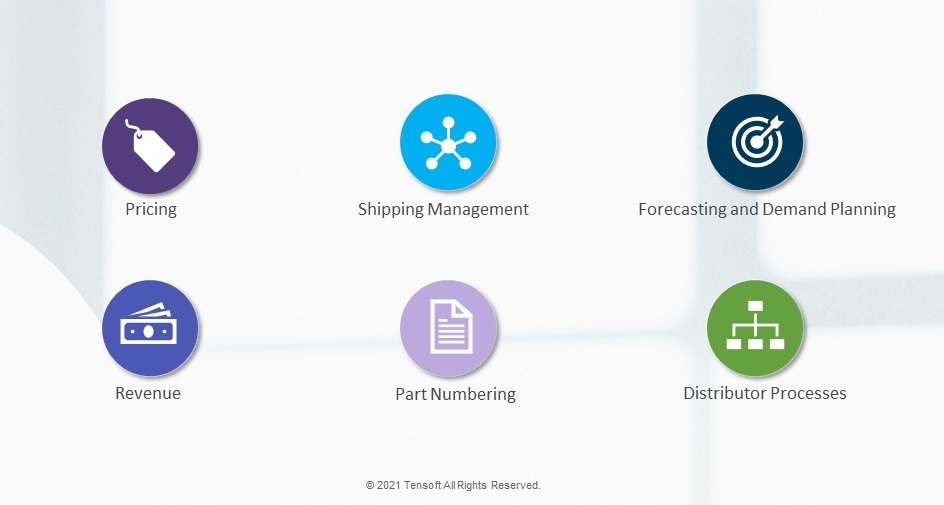If the customer on your sales order isn’t the end customer for your product(s), you may be a high tech company with a distribution-based demand model! While this is a great way to increase sales and revenue for your company, it can be challenging to manage your demand without the right processes and solutions in place.
With this model, it’s critical to capture and manage all the demand signals for your entire value chain, from finished product to end customer. This is difficult – if not impossible – with just the order-to-cash functionality in ERP systems.
So, what exactly makes demand management in a distribution-based model so tricky? The illustration below shows six areas where standard order-to-cash functionality falls short.

- Pricing:
This is one of the biggest challenges. The issue is that pricing can be based on the true end customer and not the “sell-to” customer. One of the common reasons for this is the design-win process. Then, there is additional complexity around whether pricing is quote-based or prices-based or rebates-based, etc. - Shipping Management:
Shipping management may seem basic but a lot of times the shipper accounts are the accounts for the sell-to or the end customer or the EMS. Shipping requirements may be dictated by the end customer or the ship to customer. - Forecasting and Demand Planning:
When your sales organization thinks about forecasting and demand planning, they don’t typically forecast based on the customer on the sales order. Instead, they forecast based on the end customer – the one that’s going to acquire the product. So how do you match orders that come in for distributor X to forecasts that are for end customer Y? The challenge here is how to judge the forecasts to send to Operations. You need to determine if you are on plan or off plan. Otherwise, there may be a mismatch between how you think about forecast demands and how you actually track the orders that come in. - Revenue:
From a revenue perspective, you need to consider what the final price is you will receive from the sale. With a distribution based model there can be rebates to the distributor based on design wins, or possibly even rebates to the end customer. With accounting standards IFRS 15 or ASC 606, we now have to consider the impact of pricing and price agreements, and estimate the final net value that will be received at the time of sale. - Part Numbering:
This comes into play when there’s a need to manage what end customers will accept – as well as multiple end customers on a single sales order. For example, this can be an issue when you are selling to an EMS. One EMS may have multiple customers using the exact same part who call it differently or may be even the EMS may have different part numbers. There may be an internal part numbering that tracks everything including customer call, the flow that the product goes through, but from marketing perspective it is a single part number. So, the challenge of how the supply chain tracks and views it and how you need to use that part number information is related. - Distributor Processes:
There are a variety of things that you need to consider when working through distributors – the pricing/rebate considerations, stock rotation or right to return, POS integration, ship and debit agreements, and so on. When you recognize revenue at the time of shipment you will need to understand what potential impacts there could be from future adjustments with the distributor.
Conclusion
So, how can these substantial challenges be managed? How can you get the right information to support these processes and provide key insights to the focal groups in your company?
Tensoft DemandOps was designed specifically to solve challenges. To learn more about how, please see my earlier blog post “Five Key Benefits of Tensoft DemandOps” and visit the Tensoft DemandOps product page on our website. We would be happy to answer any questions or schedule a demo too – just contact us.